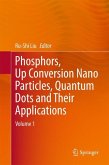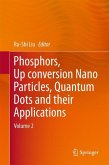The structural, optical and electrical properties of crystalline silicon quantum dots (SiQDs) are examined for application to silicon based tandem cells. The approach has been to concentrate on all silicon devices by taking advantage of quantum confinement in low-dimensional Si. The book presents the fabrication technique to form Si nanocrystals in an oxide matrix. Structural analysis, using FTIR, micro-Raman spectroscopy, TEM, XRD, and SIM were detailed. It can be noticed that the packing density of Si QDs, correlated to the oxygen content of the silicon rich oxide layer can be control independently. The preliminary results present that a decrease in the oxygen content (x) results in an increased sharpness of the Strokes-mode Raman peak of nc-Si, attributed to an increase in the proportion of crystalline Si because of the increased number of SiQDs. However, the influence of the surface region on the crystallite core intensity scattering becomes dominant, when SiQD size diameter is very small (a ~3 nm). The present work shows that a decrease in x-content leading to an increase of the SiQD concentration, initially results in the enhancement of the lateral conductivity in the SiQD.








